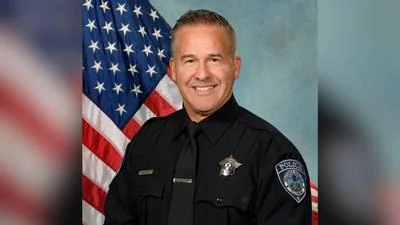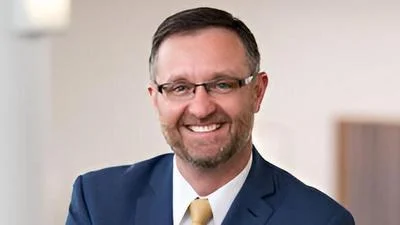Chicago: it’s time to get back to basics. Against the city’s Wild West backdrop, there is no substitute for effective law enforcement, and no substitute for real criminal justice. Violence prevention programs are increasingly fashionable. But they aren’t proving out. In Chicago they’re hard to launch, effectiveness measures are often absent, and too often employees are in new trouble with the law. It’s not a recipe for success. They may deserve some limited oxygen still. But the city can’t afford any more fatal distractions. The numbers show why.
First, the dimensions of Chicago’s crime problem are jarring. Nationwide, murder is the least underreported crime by far – and thus an essential indicator. Wirepoints’ recent 75-city 2022 murder data survey shows Chicago has led the nation in murders for 11 years running. Its murder rate is up 39 percent versus 2019, and is the second highest among the nation’s 20 biggest cities. Chicago’s murder rate also far outpaces its peers, New York and Los Angeles. Nonfatal shootings number well into the thousands each year as well.
Clearly we’ve got a problem. So, are violence prevention programs any significant part of the answer? Not by a long shot.
Chicago’s violence reduction dashboard shows that from 2018 through 2021 there were a combined 14,003 victims of fatal and nonfatal shootings. Seven citywide, neighborhood-level Chicago violence prevention programs in the same four years may have prevented 383 more such victimizations, according to one expert’s estimate. Put another way, they shaved 2.7 percent off the total.
Even if the number of programs measured grew, and that almost-three-percent impact were to triple, more than 9 of 10 Chicago victims of fatal and nonfatal shootings would meet the same fate. Violence prevention programs in Chicago aren’t going to ever take a big bite out of violent crime.
Yet that hasn’t stopped the final two contenders for Chicago Mayor on April 4 from accenting them hopefully, as part of their broader public safety platforms. Paul Vallas says he wants to make the city’s “violence prevention infrastructure” work better and smarter. Brandon Johnson says he’ll create a new cabinet-level office to coordinate and amplify violence prevention programs.
Oversight is lacking
Meanwhile, violence prevention money has continued to flow into the city. That has included an eye-popping $410 million from the federal government in Covid relief money, targeted by the city for violence prevention work. Some programs in some places doubtless have had a positive effect. But violence prevention work in Chicago is of too little overall benefit and is too often poorly overseen.
A February assessment by the Illinois Answers Project showed:
- only about six percent of the $410 million had been spent one year later.
- The city often fails to specify and collect performance data for funded violence prevention programs, so there’s no standardized way of knowing if they’re having a positive effect.
- The city has been without a top violence prevention program coordinator since October. There’ve been four in the last four years.
- Some of the “violence prevention” programs pinpointed for spending involved initiatives with little or no connection to violence prevention work. That has included efforts to install more pickle-ball courts, fix up and sell vacant lots, and boost response times to non-emergency, or 311, calls.
In addition to core problems managing violence prevention programs, there is an unwillingness to evaluate them honestly. Findings which undercut the widespread belief that they’re effective, or poised to be broadly effective, tend to fall by the wayside.
In 2022 a new study was widely hailed in Chicago media for showing, based on a scant 20 months of findings, that a violence prevention program had quantifiably reduced social harms. But as only Wirepoints reported, the study itself showed that program enrollees didn’t really perform better overall: they were no less likely than members of an unenrolled control group to be arrested for all forms of violence being measured – including criminal sexual assault, armed robbery, aggravated assault, and battery without a weapon.
Workers with fresh criminal charges or court orders
Scant impact, poor administration, and incomplete or dishonest reporting on their benefits aren’t the only shortcomings of violence prevention programs in Chicago. Sometimes the violence interrupters themselves not only have prior felony convictions – which is arguably not a disqualifier for the specialized work – but also recent criminal charges.
CWB Chicago reported that in January Chicago Police arrested a violence prevention worker for unlawful possession of a weapon by a felon, possession of a heroin, and possession of a controlled substance – or bagfuls of what was believed to be crack cocaine. It occurred during execution of a search warrant. He was found by police hiding under a bed, naked, and had five prior felony convictions.
CWB also reported that in February Chicago police arrested two gang intervention workers. One for being a felon in possession of a firearm and illegal delivery of a firearm, and the other for illegal sale of a firearm and delivery of cocaine. Right after the alleged cocaine delivery, the suspect went to his gang intervention job site, according to police.
The Illinois Answers Project reported that one violence prevention program that gets city funding through a middleman agency is headed by a man still under a court order to stay away from his wife and children. He is paid $175,000 per year. The violence prevention group’s listed address was a shuttered storefront in a South Side strip mall. The protection order was entered following his 2018 conviction for holding a gun to his wife’s head and threatening to kill her, while their children watched. A judge in October 2022 extended that protection order to 2024.
Drop the pretense about how to tamp down major crimes in Chicago
If Chicago wants to get serious, it needs to drop the pretense that violence prevention programs will ever play a significant part in stemming violent crimes, and other major crimes – which are up 33 percent from 2019, 41 percent from 2022, and so far this year 52 percent compared to a year ago.
To tamp down crime once and for all the city needs:
- Cook County prosecutors and judges who’ll first stop the revolving door which encourages criminals.
- More politicians who challenge vilification of and violence against Chicago police, and who confront and condemn pernicious advocacy by Chicago Public Schools of looting and arson.
- Police officers who are more fully empowered to do foot chases and car chases.
- More cops assigned to district-level patrols, not citywide units or desk jobs.
- Far better response to high-priority 911 calls.
Wanted: arrests, prosecutions, convictions, and just sentencing
That’s a blithe dismissal of crime’s horrific impact on victims – who in Chicago are disproportionately black. If Chicago is to lower its murder rate to New York City’s 5.2 per 100,000 it will need to drop from 700 or more murders annually to 140. Thus, there’s no avoiding a far more serious approach to crime prevention. Incrementalism – which is the most charitable description of violence prevention programs – isn’t working.
It’s precisely arrests, prosecutions, convictions, and just sentencing that Chicago needs, in order to stop the bleeding. Foot patrols by police embedded within a return to real community policing are one essential part of that.
Empowered and accountable police, and empowered and accountable judges and prosecutors are how to finally deliver on the city’s top priority, and a fundamental expectation of the governed. That’s safer streets for all: 24-7.





 Alerts Sign-up
Alerts Sign-up